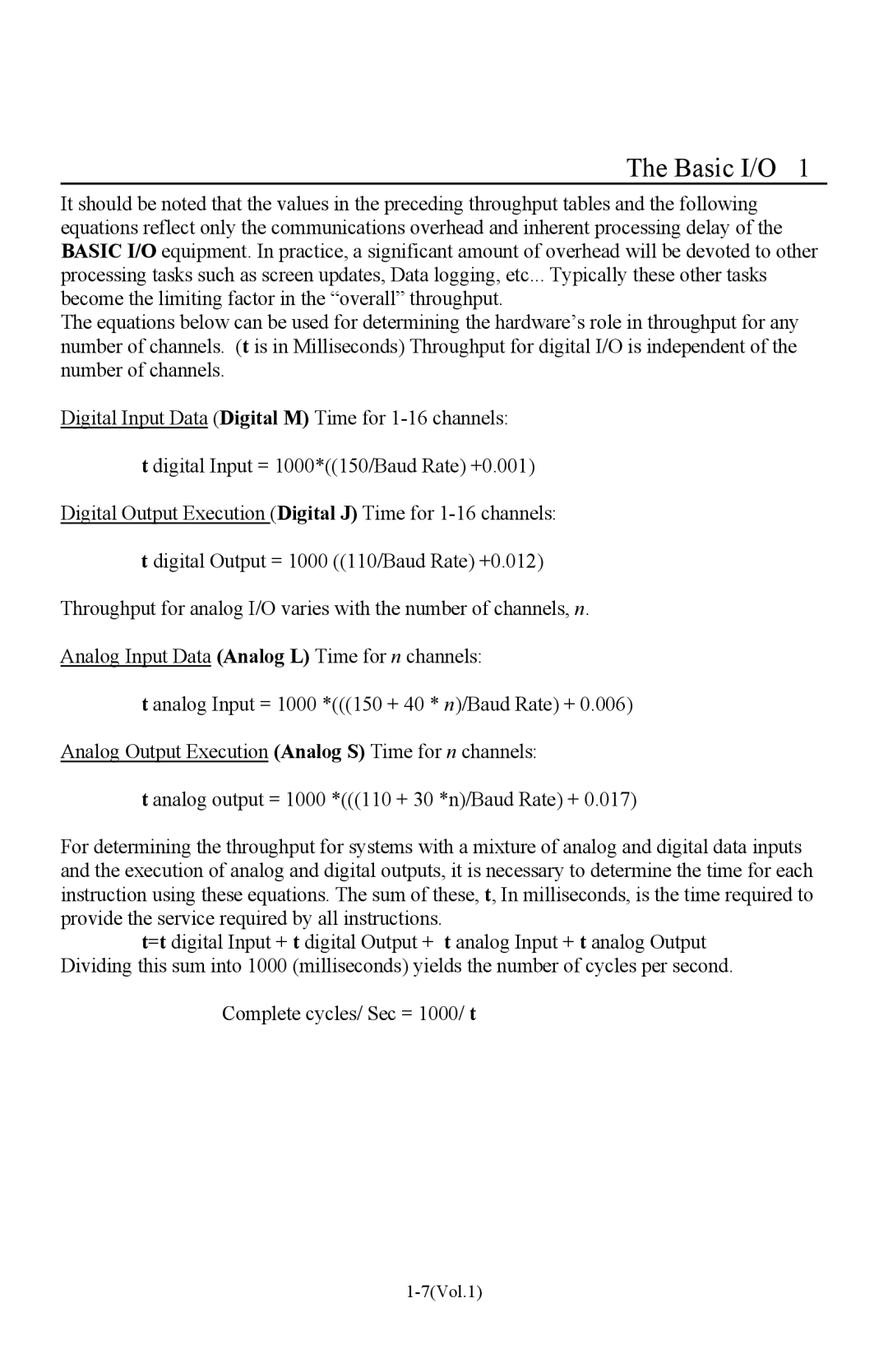The Basic I/O 1
It should be noted that the values in the preceding throughput tables and the following equations reflect only the communications overhead and inherent processing delay of the BASIC I/O equipment. In practice, a significant amount of overhead will be devoted to other processing tasks such as screen updates, Data logging, etc... Typically these other tasks become the limiting factor in the “overall” throughput.
The equations below can be used for determining the hardware’s role in throughput for any number of channels. (t is in Milliseconds) Throughput for digital I/O is independent of the number of channels.
Digital Input Data (Digital M) Time for
t digital Input = 1000*((150/Baud Rate) +0.001)
Digital Output Execution (Digital J) Time for
t digital Output = 1000 ((110/Baud Rate) +0.012)
Throughput for analog I/O varies with the number of channels, n.
Analog Input Data (Analog L) Time for n channels:
t analog Input = 1000 *(((150 + 40 * n)/Baud Rate) + 0.006)
Analog Output Execution (Analog S) Time for n channels:
t analog output = 1000 *(((110 + 30 *n)/Baud Rate) + 0.017)
For determining the throughput for systems with a mixture of analog and digital data inputs and the execution of analog and digital outputs, it is necessary to determine the time for each instruction using these equations. The sum of these, t, In milliseconds, is the time required to provide the service required by all instructions.
t=t digital Input + t digital Output + t analog Input + t analog Output Dividing this sum into 1000 (milliseconds) yields the number of cycles per second.
Complete cycles/ Sec = 1000/ t
